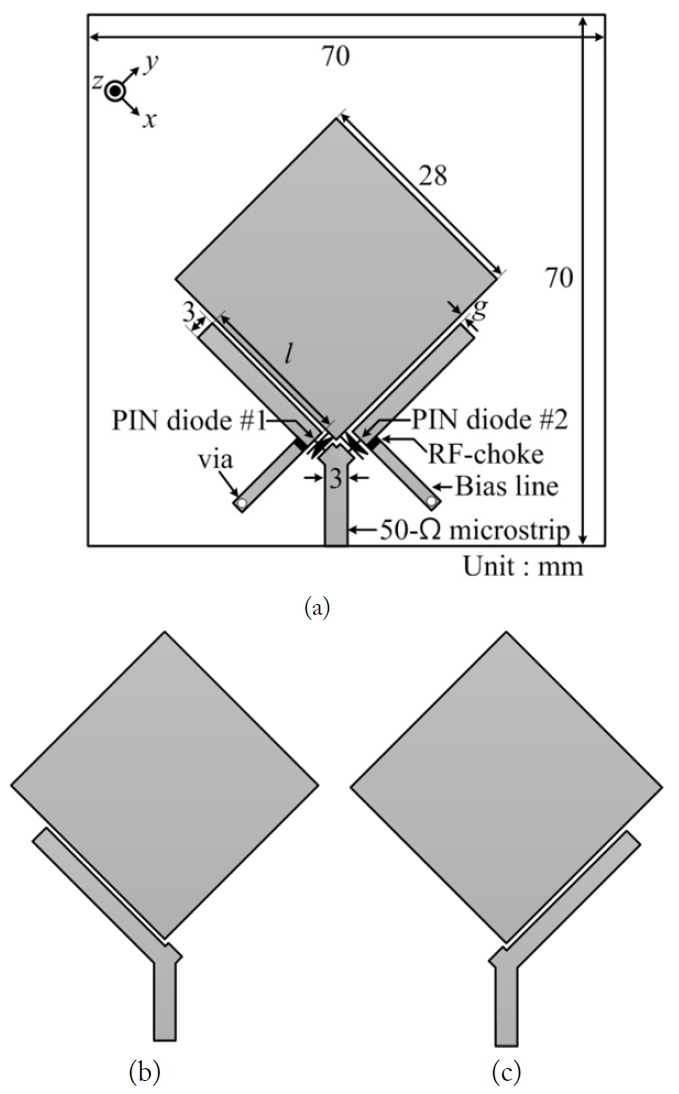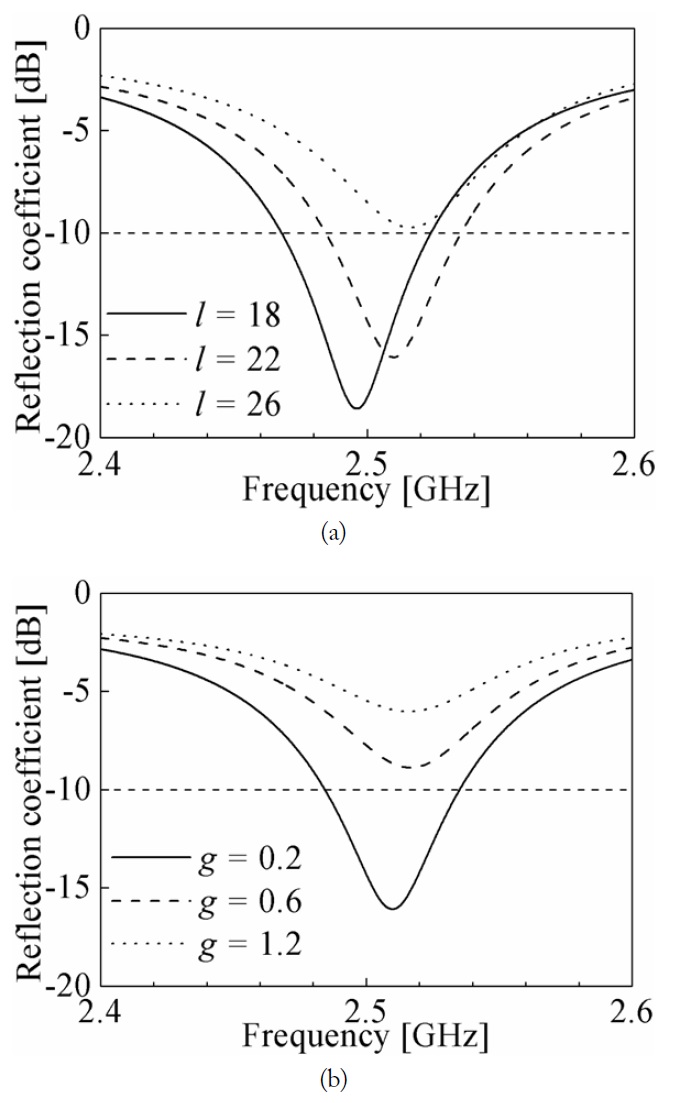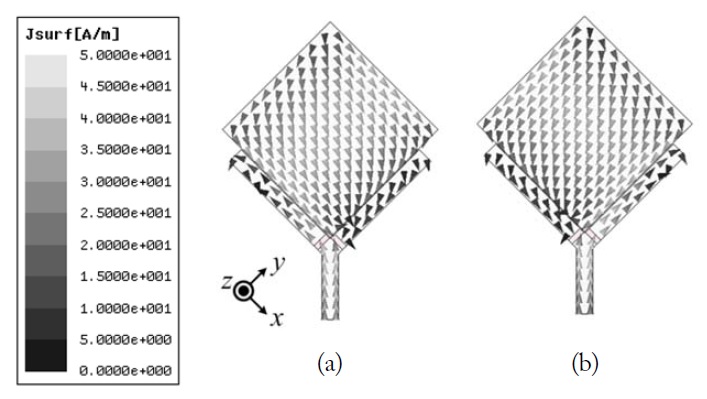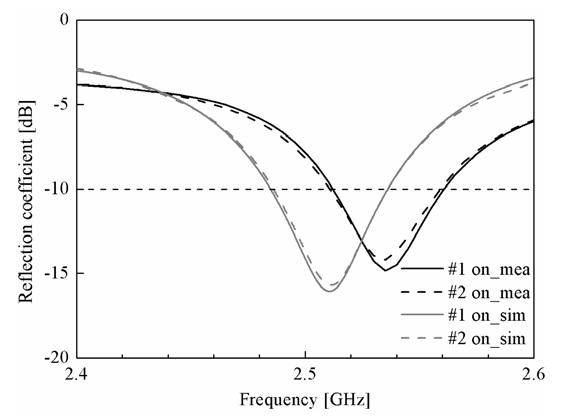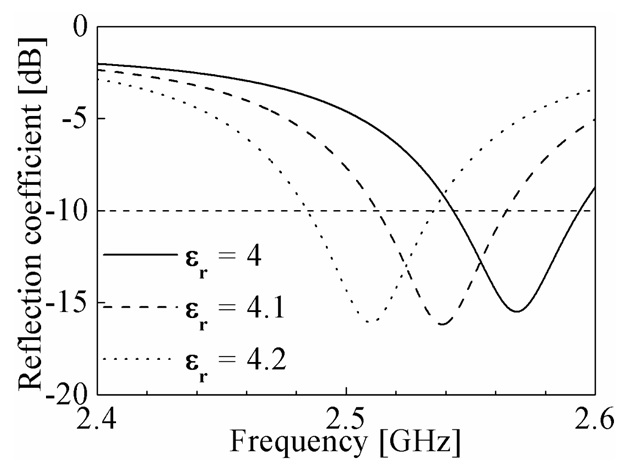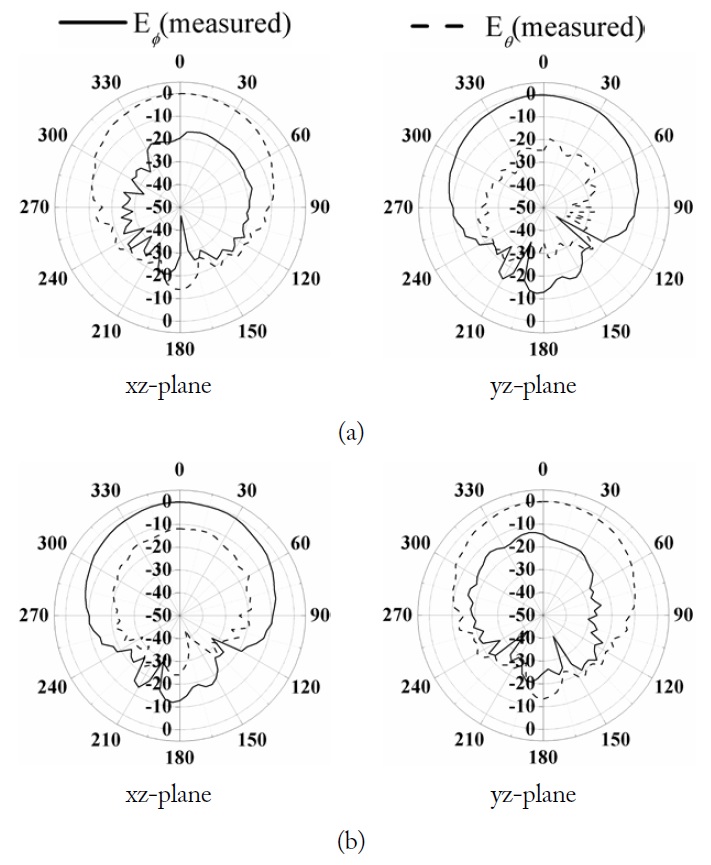



Polarization diversity antennas are now well recognized for their low fading loss (which is detrimental to performance), as well as their high spectral efficiency [1]. Therefore, they have been used for wireless communication and sensor systems. Generally, a sensor system may have a pair of linearly polarized antennas and the polarization is selected by a switching circuit controlled by the baseband of the communicator to achieve the best signal quality [2]. However, this approach requires a large amount of space. A reconfigurable antenna with polarization diversity has an advantage of creating two or more polarizations using only one resonator [3-6]. In [3], four diodes were used for polarization diversity.
However, this complicates the antenna structure. In [4], a polarization reconfigurable slot antenna was proposed where the vertical and horizontal linear polarizations were controlled by two PIN diodes. Nevertheless, an inherent bidirectional radiation generally occurs in slot antennas, which is undesirable in wireless communication applications [5]. In [6], a reconfigurable patch antenna was proposed that had a U-shaped feeding structure for switching the polarization between the right-hand circular-polarization (RHCP) and the left-hand circular-polarization (LHCP). However, this antenna requires a multi-layer structure.
A previous publication introduced a square-patch antenna with an asymmetric Y-shaped feed structure for circular polarization [7]. This idea, with two PIN diodes inserted in the gap between the patch and the Y-shaped feed line, was proposed in [8] for polarization diversity. As a result, polarization can be switched between LHCP and RHCP. The present letter proposes a structure that differs from that in [7]; namely, a novel reconfigurable patch antenna for linearpolarization (LP) diversity. Ideally, the Y-shaped feed structure can be changed into one of the shapes in Fig. 1(b) and (c) when only one of the two PIN diodes is in the on-state. This brings about the LP radiation of the square-patch antenna.
The configurations of the proposed reconfigurable antenna and the ideal cases according to the bias states of the two PIN diodes are illustrated in Fig. 1. The proposed reconfigurable patch antenna is fabricated on a commercially available FR-4 dielectric substrate with a permittivity of 4.2 and a thickness of 1.6 mm. The size of the ground plane is 70 × 70 mm2 and it is printed on the bottom layer. The proposed antenna mainly consists of a square patch and a Yshaped feed structure with two PIN diodes. The side length of the square patch is 28 mm. The lengths of the two branch lines of the Y-shaped feed structure are equal and are denoted by
Fig. 2 shows the simulated results of the proposed antenna in accordance with the variations in
Fig. 3 shows the simulated current distribution on the square patch surface at 2.51 GHz. When PIN diode #1 is in the on-state and #2 is in the off-state, maximum current density is observed along the y-axis. In this case, little current density occurs at the right branch of the Y-shaped structure because diode #2, in the off-state, properly blocks the radiofrequency (RF) power. On the other hand, maximum current density is observed along the x-axis when PIN diode #1 is in the off-state and #2 is in the on-state. This confirms that the polarization sense of the proposed antenna is controlled by adjusting the bias states of the two PIN diodes. Note also, as shown in Fig. 3, that the minimum current density exists at the bias circuit. This means that the RF signal is properly isolated from the DC bias.
III. SIMULATED AND MEASURED RESULTS
Fig. 4 shows the simulated and measured reflection coefficients of the proposed antenna. The geometric dimensions of the proposed antenna are
Fig. 5 shows the simulated reflection coefficient of the proposed antenna according to variation of ε
Fig. 6 shows the measured 2D radiation patterns of the proposed antenna. The measured peak gain is 3.13 dBi when PIN diode #1 is in the on-state and #2 is in the off-state. On the other hand, the measured peak gain is 3.03 dBi when PIN diode #1 is in the off-state and #2 is in the on-state. In both the cases, the cross-polarization levels are better than -16 dB and -13.2 dB, respectively. The measured results show that broadside radiation patterns with good LP characteristics are obtained. In the xz-plane of Fig. 6(a), the copolarization is |
This paper proposes a reconfigurable patch antenna for LP diversity. Two LPs, which are orthogonal to each other, can be switched by using two PIN diodes. A prototype of the proposed design is successfully implemented and the simulated and measured results concurred. The proposed antenna is suitable for applications in communication and sensor systems.
